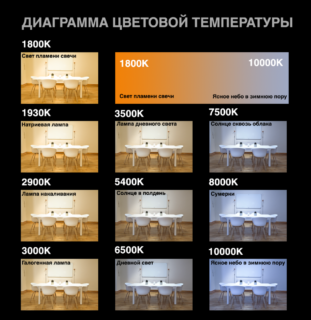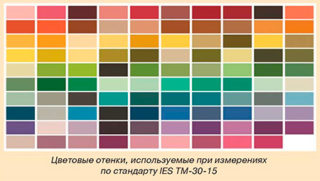The popularity of LED lamps has led to various questions regarding the features of their functioning. There are many rumors and speculations about the effects of LEDs on humans.
Light, its spectra and influence on people
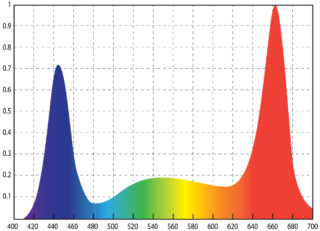
Light is visible radiation, which acts as the only irritant to the eye, which leads to visual sensations that provide a visual perception of the world. Images appear on the retina and visual images are formed. In addition, light contributes to the implementation of other important reactions that have a reflex and humoral nature.
The incidence of light on the organ of vision causes impulses that propagate along the optic nerve to the optic region of the cerebral hemispheres. Depending on the intensity, excitation or depression of the central nervous system occurs, while the physiological and mental reactions are rebuilt, the general tone of the body changes and the active state is maintained.
Spectrum means the distribution of radiation intensity values along wavelengths. There are red, orange, yellow, green, blue, blue and violet spectra of light. Each of them specifically affects the human body.
Color rendering index

In terms of human impact and light quality, the CRI value of the LED is important. The Color Rendering Index, also known as the color rendering index, is a parameter that characterizes how much the visible color matches the natural color of the body when illuminated by the heat source used. Its value is calculated as the average of eight colors, which are designated from R1 to R8.
The red color deserves special attention. It is designated R9. It is not always indicated. The R9 value affects the quality of human skin tone reproduction. The red tint is very subtly perceived by the human eye. Even the smallest deviations are noticeable. If the lighting is of poor quality, the human eye immediately notices everything: all defects, for example, pimples and pallor. Therefore, the R9 check is carried out to obtain a more accurate result.
Quality calculation
The color rendering index for LED lamps is necessary to determine the quality of the light source during its creation. A special check table is used to calculate the index value. It has eight standardized colors, all faded and desaturated.
Measure the parameter value for each color. These measurements allow you to find out how colors will be transmitted under a particular luminaire. A reference light is used for measurements. Then the information obtained is compared using the methodology of the International Lighting Commission, and information about the degree of deviation from the standard is obtained.
Recommended values
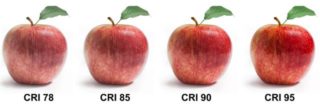
The maximum CRI value is 100. But it is not always necessary to strive for such an indicator. Different types of lamps have different index values. Some are suitable for areas where precision work is carried out. Others are suitable for warehouse buildings. Shop windows selling fabrics or finishing materials must correctly render palettes. The same requirements for exhibitions in museums.In this case, the parameter value should range from 90 to 100.
In rooms where it is important that there is a comfortable light for the eyes, and the display of saturation does not matter, the color rendering index range from 70 to 90 is considered acceptable. The color rendering of LED lamps in the overwhelming majority of cases is in this range. It is possible to achieve the best result, but this leads to a significant increase in the price of the final product. When the diode is used in residential, educational, office and medical environments, the 70-90 range is more than enough.
Where color is not important, lighting sources are used whose index is below 60. This applies to street lighting and warehouse lighting. The human eye notices deviations in the color palette if the index value differs by more than 5 points. Smaller differences are subtle to the eye.
The standard is the sunlight of the northern hemisphere and the light of a tungsten light bulb. The color rendering value for them is equal to 100. But there are pitfalls here too. For example, if you measure the glow of the sun in the northern hemisphere, you will notice that it reproduces red shades worse. The tungsten light bulb has a blue spectrum problem.
Difficulty in measuring
Light sources can have the same index parameter. However, the visual assessment of the color display will vary greatly. Due to the large number of different sources of artificial lighting, a need arose for a more thorough check of the carried out color rendition. Although CRI is still the main mandatory parameter that is used during light quality assessment, alternatives have already been proposed. These include CQS and TM-30.
Alternative assessment options
In 2015, another attempt was made and the TM-30-15 was presented. It measures 99 reference colors. The use of the TM-30-15 standard allows you to increase the account of hue and saturation when controlling the quality of light. In fact, this standard includes two indices. Precision ranges from 0 to 100, and saturation ranges from 60 to 140. Calculating the value of this standard is the most difficult task, and not only because of the number of control colors. We have to simplify the results to 99 points, divide them into 16 color groups and distribute them on a special vector diagram. Then the obtained values are compared with the standard.
Comparison of the index value and the actual light
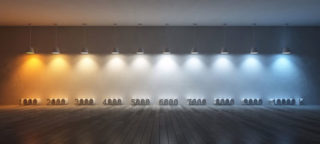
If a good light bulb is used, all three factors mentioned will be the same. However, discrepancies can be observed with low-quality goods. This is due to the fact that "very cunning" manufacturers make the phosphor in such a way that the emphasis goes to the 8 main shades used for comparison. All others just don't count. But the human eye always sees such fakes.
It is important to check light bulbs, especially when it comes to purchasing for a nursery.When something appears for the first time in life, it is perceived as normal. And then it becomes difficult to retrain.
Other light sources
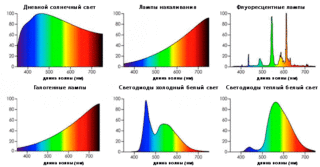
All lamps used should be measured. The following values are obtained:
- Incandescent lamps. Have close to solar color rendering. On the CRI scale, their value is 100. But visually, there is a shift towards the area of warm shades.
- Halogen lamps. Color rendition is close to that of tungsten bulbs, therefore, a large luminous flux is observed.
- Sodium light bulbs. The luminaires provide a fairly low color display. The index value hovers around 40.
- Arc mercury fluorescent lamps. According to their values, they are about sodium. The blue spectrum predominates, therefore, DRL is not used for growing plants.
- Fluorescent bulbs. The range of changes can vary significantly: from 60 to 90. The exact value depends on the phosphor used.
LED bulbs occupy an intermediate position with indicators of 70-90 on the CRI scale.
Impact on people
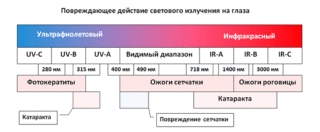
- The main amount of power consumption goes to light radiation. The rest of the energy is spent on heating, but its value is so small that the ice will not melt in a few minutes if it is brought close to it. Therefore, there is no need to fear burns.
- LED bulbs do not contain heavy metals, radioactive elements or toxic substances.
If damaged, LED bulbs will do less harm to human health than all other options. Therefore, it is better to depend on such a light source than other more hazardous lamps.

